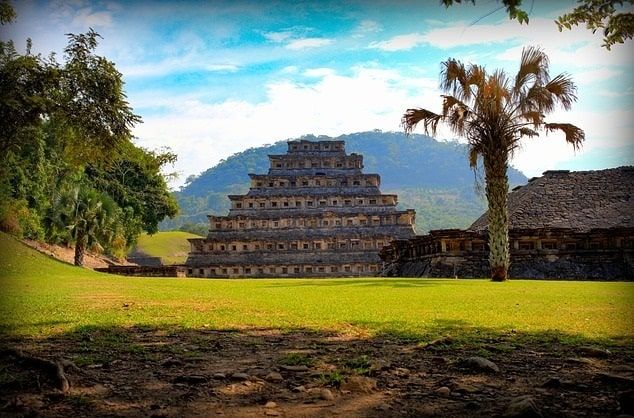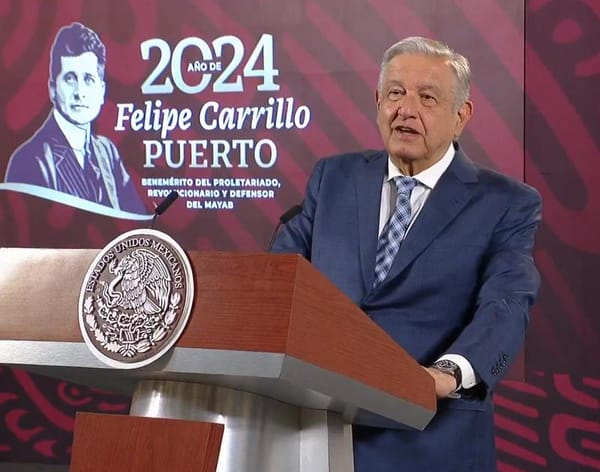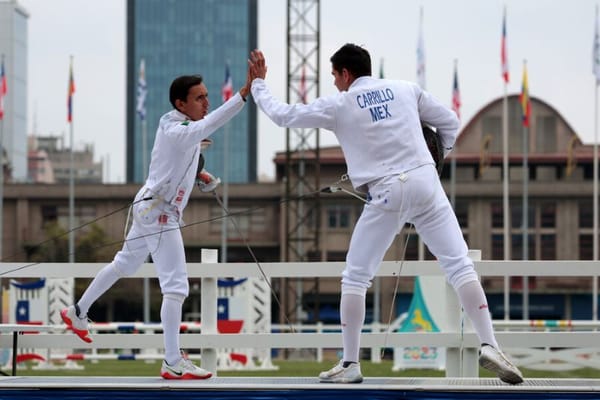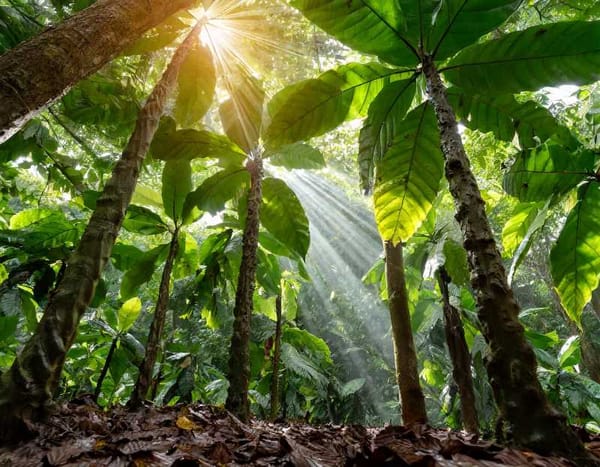Archaeological Zone of Veracruz, The Gulf Lookout
The archaeological site of Veracruz has an incredible view of the Gulf of Mexico and the site where Cortés established the first Villa Rica de la Veracruz.

With wide terraces on the sinuosities of a hill, in which tombs were built for secondary burials, overlooking the sea and the mountains; as well as monumental architecture, Quiahuixtlán stands as one of the most impressive Totonac sites on the coast of Veracruz, in front of the coasts of the Gulf of Mexico.
The sky was never bluer in Quiahuixtlán. It was lost among the sea. The atmosphere indicated that they would arrive and save us. We were waiting for them. Day and night we watched for their arrival from the summit of the Cerro de los Metates. When we finally saw them, we fled in fear, we ran and left the city empty, we took refuge with the hierarch and he said: "do not be afraid, they are our teules, our gods".
At ten o'clock in the morning, the footsteps were heard closer, they brought big four-legged animals that we had never seen before. We invoked the protection of Quetzalcoatl because we knew he had sent them.
We waited for them at the highest point of our city, from where we could see the coast and our ceremonial center, formed by 12 structures, among which the main temple and the ball game stand out. From there we saw them arrive in huge ships and we prepared a great welcome for them.
Evidence of this welcome is captured in the chronicles that Bernal Díaz del Castillo wrote when he arrived at Quiahuixtlán, along with the Spanish conquerors: "In the middle of that town we found no native to talk to, which we marveled at, they had fled in fear that very day since they saw us going up to their houses.
And being in the highest part of the fortress, in a square, next to where they had their idol's cues and big houses, we saw fifteen indigenous with good blankets, and each one with a clay brazier and in them their incense, and they came to where Cortés was and they burned him".
Quiahuixtlán, "the place of the rain", in Nahuatl, is located near the Laguna Verde thermoelectric plant, in front of the Gulf of Mexico coasts on the shores of the Cardel-Nautla highway and represents, in the history of the conquest, the place from where the Totonacs sighted the arrival of Hernán Cortés in 1521.
In this peaceful place, 30 rulers of different Totonac peoples agreed to a treaty of "non-aggression" against the Spaniards and began the alliance to overthrow Moctezuma.
Its periods of apogee correspond to the Early Postclassic (900 - 1200 A.D.), where there was a clear dominance of the Toltec style, and the Late Postclassic in its terminal phase (1200 - 1519 A.D.), a period in which Quiahuixtlán was influenced by the Mexica.
Possessing characteristics that make it unique in Mesoamerica: wide terraces on the sinuosities of a hill, in which tombs were built for secondary burials, with a view to the sea and the mountain; as well as monumental architecture, Quiahuixtlán stands as one of the most imposing Totonac sites of the coast of Veracruz.
Open to the public from Tuesday to Sunday from 9:00 to 17: 00 hours, the archaeological site of Veracruz has an incredible view of the Gulf of Mexico and the site where Cortes established the first Villa Rica de la Veracruz.
Divided into two architectural groups: the Cemetery Complex and the East Complex. In the middle of the hill -that has a height of 300 meters above sea level- is located the first one, constituted by about 78 tombs distributed in three cemeteries: central, east, and south. There are also four major structures, which according to archaeologist Jaime Cortés, represented the temples where they offered offerings to their dead.
Among the tombs of the central cemetery, two primary burials were found, and 32 secondary ones, whose structures resemble small teocallis or temples oriented to the north, where some offerings composed of vessels and other elements were also found. Probably in this place the great hierarchs were buried, because the tombs are larger and are separated from the others.
In the central square, there are two buildings, the most important of them is called the Pyramid of the Sacrifices, which has an inlaid stone of Mexica style in its summit. Both buildings conserve the stucco plaster, which was made with oyster, clam, and snail shells.
To the north of the plaza is the second architectural complex, the so-called East Complex, made up of 23 tombs that do not face the sea, but to the west and south; the one located to the north consists of two rows of tombs totaling 24.
Among the Totonacs there was a belief to bury the dead from east to west, the place was occupied by women who died in childbirth, related to the goddess Cihuateteo. While from the midpoint to the sunset, they buried the warriors killed in combat, hence the distribution of some tombs.
The eastern plaza constituted the civil and justice area of the government, where a building divided in half by a narrow corridor stands out, this construction is called "The Twins". It is believed that each one of these was a shrine to the Mexica gods Tlaloc and Huitzilopochtli.
To admire the view of the sea is to share for a moment the expectation that the Totonacs lived before the arrival of the Spaniards, always vigilant that Quetzalcoatl would arrive at their city, as he had promised them.
The part of the site that is currently open to the public, only constitutes the ceremonial part, because the housing complexes that were occupied by fishermen, salt extractors, potters, and other artisans, are scattered in the lower part of the hill, while the rooms of the hierarchs are located above the ceremonial center.
Source: INAH-Veracruz Center




